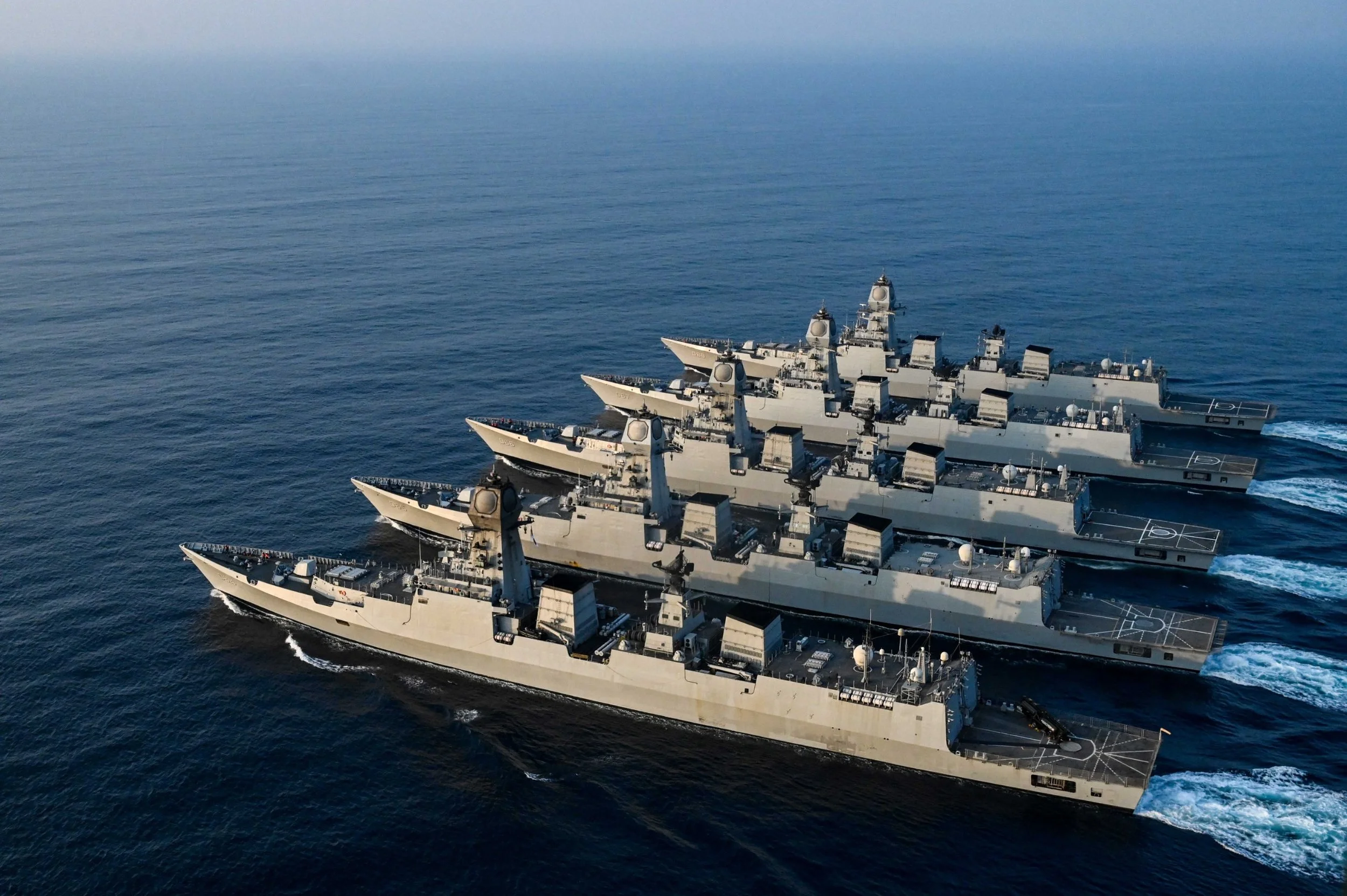By: Dhruva Jaishankar and Ammar Nainar
While the world may be preoccupied with conflicts in Ukraine and the Middle East, China is earnestly preparing for military competition in the Western Pacific. The First Island Chain — linking the archipelagos of Japan, Taiwan, and the Philippines — is the primary area from which China will seek to displace the United States. Successfully doing so will complete what China's paramount leader Xi Jinping calls “the great rejuvenation of the Chinese nation.” For Beijing, developing the necessary capabilities to neutralize the United States in the First Island Chain — and developing assets beyond that can assist in this effort — remains a priority. To this end, the People's Liberation Army (PLA) Navy continues expanding its presence and reach in the Indian Ocean littoral, in Southeast Asia, in the South Pacific, in the Western Hemisphere, and in the Southern Atlantic.
A clear demonstration of China’s ongoing military modernization efforts was its 2025 Victory Day parade, its longest in recent memory. The parade prominently featured cyberwarfare, electronic countermeasures, and unmanned ground, air, surface, and underwater systems. This open signal of modern warfighting capability by China comes amid the largest purge of the PLA since Mao Zedong, and Xi's repeated emphasis on battle-readiness, technological solutions, and civil-military fusion.
For India, the military contest between China and the United States in the Western Pacific is of crucial importance: its outcome will fundamentally define India’s strategic environment. The Indian government has estimated that over half its trade flows through the South China Sea, while Japan, South Korea, Taiwan, China, and the Russian Far East all remain economically important for New Delhi. Given deep and structural India-China differences — which can be managed, but not easily resolved — the prospect of complete Chinese control of sea lines of communication east of the Malacca Strait will directly impinge upon India’s own economic security. China's displacement of the United States from the Western Pacific will also fundamentally overturn the regional — and global — balance of power.
Despite a limited ability to deploy military assets long term east of the Malacca Strait, India is already contributing in many ways to Pacific security, both through interoperability and capacity building efforts. Its chief partners are the Quad countries — the United States, Japan, and Australia — whether collectively or individually. The Quad has met twice this year at a ministerial level (in January and July), and discussions are still underway for a leader-level summit this year or early next year. But the Quad has also faced stresses from Washington’s insistence on greater defense spending by allies, its review of technology transfers (such as AUKUS), its prioritization of other partners, and tariffs on every other Quad country. The United States has also insisted on a more narrow and focused agenda for the Quad, comprising maritime security, economic cooperation, critical technologies, and humanitarian assistance and disaster relief. This agenda has been slimmed down from what had previously been about 12 working groups, in addition to the Malabar naval exercises.
Nonetheless, Quad security cooperation has continued this year. Its 2025 activities have included a joint coast guard sail off Guam, a simulation exercise in Honolulu in May, and cooperation in providing humanitarian relief to Myanmar following a devastating earthquake. In March, the four Quad countries along with South Korea took part in Exercise Sea Dragon, an anti-submarine warfare exercise. In January, Indian destroyers took part in French-led La Perouse in the Indian Ocean, along with U.S. and Australian counterparts. Similarly in July, India for the first time participated as a full member in the Talisman Sabre exercise led by Australia and the United States, which also featured Japan. Other examples of Quad cooperation over the past year includes infrastructure investments, telecom deployments, and commercial satellite data sharing under the Indo-Pacific Maritime Domain Awareness Initiative.
Meanwhile, a more narrowly-focused Quad has also not derailed India’s bilateral security engagements with its three partners. Despite political frictions this year, the United States and India participated in tri-service Tiger Triumph exercises off Vishakhapatnam in April (which also involved the U.S. Space Force) and the Yudh Abhyas army exercises in September in Alaska. Similarly, during a visit this year to Japan by India’s Prime Minister Narendra Modi, the two countries issued a new joint declaration on security, which pledged deeper technology cooperation, logistical cooperation, special forces engagements, and ship repair coordination, among other things. In March, India and Australia also held their defense policy talks, and later this month, they are expected to conclude additional agreements on information sharing, maritime security, and joint activities.
With other Pacific partner countries, India’s security cooperation has only increased in 2025. In August, India and the Philippines declared a strategic partnership, with “Defense, Security, and Maritime Cooperation” taking up considerable space. As part of ramped up cooperation, India took part in exercises in the South China Sea with the Philippines and has provided Manila with anti-ship cruise missiles. India’s naval cooperation with Vietnam, Singapore, Indonesia, and Malaysia has also continued and intensified in a variety of ways. In the South Pacific, India also initiated a defense dialogue with New Zealand and opened a new defense wing at its embassy in Fiji. Indian naval vessels have also visited Fiji and Papua New Guinea, and various high-level engagements continue with the other Pacific Island countries.
India’s maritime resources will naturally prioritize its near-abroad: the Indian Ocean. But as China and the United States jostle for position, India has a modest but meaningful role to play as a security provider in the Western Pacific. Beyond the Indian Ocean, its ability to improve interoperability with willing and capable partners and assist in capacity-building efforts have only increased, notwithstanding the tenor of relations with the United States. These efforts can help raise the cost of conflict, increasing the deterrence capabilities of countries in the region while building the cooperative sinews with partner militaries for a variety of contingencies. India’s military sales, training efforts, dialogues, and joint operations with countries as diverse as Japan, the Philippines, New Zealand, Fiji, and Vietnam are indicative of its growing strategic compulsions beyond the Indian Ocean.
Dhruva Jaishankar is Executive Director at ORF America and Ammar Nainar is a Program Coordinator and Junior Fellow for the Foreign Policy & Security program at ORF America.

